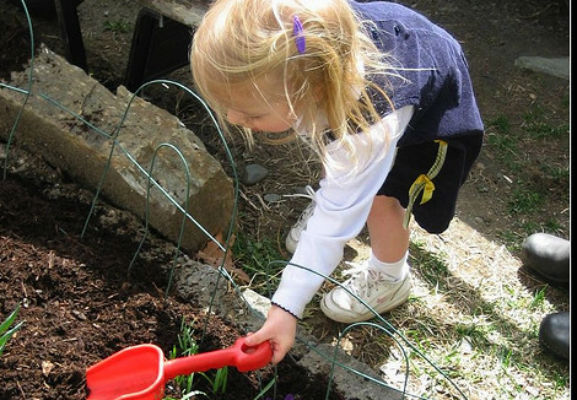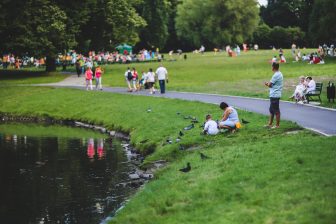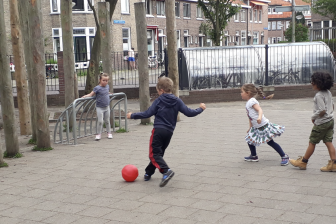
13 steps to enable gardening for disabled children
Like most people, disabled children like to garden; but many of those affected by physical, mental or sensory impairments may not get the opportunity. Society has a responsibility to offer all children the benefits of working with nature, giving them the chance to create something that can grow. Thirteen simple steps can enable all children to enjoy this elemental pleasure.
Importance of children’s participation
Planning a garden for any children can be a very rewarding undertaking; but we have to keep costly mistakes to a minimum. Ideally, everyone connected with the child should have some input: from health professionals to play and youth workers, administrative staff and of course parents too.
Most important is input from the children themselves, who will have their own ideas and abilities. It is important to respond to their enthusiasm in kind; to offer them real commitment towards the project but also to identify its aims, which may be, depending on the age of the children involved, to:
- Improve their present environment
- Develop gardening as a hobby
- Develop their social skills
- Encourage physical activity
- Teach the basics of plant and animal life
- Supply the opportunity to talk one on one in an outdoor environment
- Inspire a love of nature
How to create a positive experience for the children in 13 steps
1. Always watch the sun movement in conjunction of sunny or shade plant material. A vegetable garden should be grown in a north-south direction.
2. Ensure shelter from sun and wind, because a comfortable outside environment attracts the child to go outside.
3. Recognise and be aware that some disabled children may be sensitive to light and temperature differences.
4. Security is of great importance and the possibility of animal damage or vandalism. Purchase ‘allergy friendly’ trees or shrubs that attract butterflies or hummingbirds.
5. Look for plants with a strong fragrance for the visually impaired child – such plants when dried make wonderful smelling sachets*.
6. Attract birds, hummingbirds & butterflies.
7. Plants for drying can be used for indoor crafts
8. Choose appropriate anti-slip paving stones.
9. Raised bed gardening is great for everyone.
10. Situate bird-feeding stations, which can be observed from different windows.
11. Create social or shaded work corners.
12. Use ornamental grasses in the design, because they look good all year, and can also be used in craftwork*.
* Note beware of high fragrant plants and ornamental grasses, some of which may trigger asthma or other allergic reactions. ALWAYS check first!!
13. The water supply at different areas should be frost-free, and the hose and tap lines need to be flushed out (empty) at the end of the growing season.
Inclusive education
There is no greater joy than seeing, smelling or touching plants as they grow and flower, reaching for the sunshine as they sway gently in the breeze. All children, regardless of their impairments, can be filled with the wonder of nature and pride in themselves from their participation in nature through such a garden.
Disability may limit their level of involvement, but with the right support all children can participate. Even holding a watering can or garden hose will allow children to have a part in the gardening experience. Introduce children to the joys of the earth and watch their reactions as they get their hands dirty and help to grow beautiful flowers or help to produce the bounty of homegrown vegetables.
Gardening knows no bounds!
Photo credit: Photo by Janine, Grace in the Garden (www.flickr.com/photos/team_716_pwns/130526335/)




